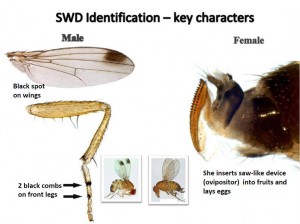 The webinar, “Making the Most of Your Insecticide Toolbox to Manage SWD,” highlights information about controlling the invasive insect pest, spotted wing Drosophila (SWD), providing recommendations for growers to prepare for the 2017 growing season. This webinar will include time for questions from attendees.
The webinar, “Making the Most of Your Insecticide Toolbox to Manage SWD,” highlights information about controlling the invasive insect pest, spotted wing Drosophila (SWD), providing recommendations for growers to prepare for the 2017 growing season. This webinar will include time for questions from attendees.
Registration is required to attend at NO COST.
Details: Members of the Sustainable SWD Project will present a webinar online on January 25th at 12-1pm eastern time, highlighting information about control of the invasive insect pest, spotted wing Drosophila. The webinar titled “Making the Most of Your Insecticide Toolbox to Manage SWD” will cover research conducted during the first year of this project, and will provide recommendations for growers to prepare for the 2017 growing season. For this webinar, presenters from North Carolina State University, Michigan State University, and the University of Georgia will report on their research on insecticidal control of spotted wing Drosophila, with future webinars planned to report on monitoring, biological control, and other aspects of this multistate project. Funded by the USDA-Specialty Crops Research Initiative, this multiyear project aims to improve grower’s options for the control of this invasive pest.
Time
Jan 25, 2017 11:30 AM in Eastern Time (US and Canada)

